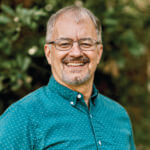Last December some children in the north Indian state of Orissa watched Hindu militants burn their fathers to death. Today these kids have found a refuge.
This past Monday at the Home of Hope Center in Coimbatore, India, more than 150 boys in matching uniforms stood in neat rows on the tile floor of their prayer chapel and began singing praise songs in Telugu, Hindi and Tamil. The smallest ones fidgeted as they clapped in unison. The older teens raised their hands in the air as they worshiped Jesus.
I sat on the stage and watched their smiling faces with amazement, knowing that some of these children had watched their own parents burn to death a few months ago.
| “Like the three Hebrew boys who were thrown into a fiery furnace by the Babylonian king Nebuchadnezzar, these boys from Orissa came out of the fire without smelling like smoke.” |
Some of these boys were rescued off the streets in the cities of Andhra Pradesh. Others fell through the cracks in India’s fragile social system because their parents were too poor to feed them. But 57 of these boys came to the Home of Hope a few months ago after their Christian fathers were killed during a wave of violence that struck the state of Orissa in 2008.
“They are traumatized,” says Dellis Gomes, who cares for these children with her husband, Indian evangelist Harry Gomes. “They are easily frightened. Some of them wet the bed at night because they are afraid to get up in the dark. It was so horrible what they watched.”
The wave of persecution hit Orissa when crazed Hindu militants began bombing villages, raping nuns, destroying Christian businesses and using death threats to force people to reconvert to Hinduism. The attacks were aimed at Baptists, Catholics and Pentecostals alike—really anyone who wears a Christian label.
Some Christians who ran into the forests to hide starved to death. Elderly men who could not escape fast enough were hacked to death with axes or shot and then cut to pieces. Those who survived but lost their homes now live in crude, government-run refugee camps.
The Orissa massacre was one of the worst outbreaks of religious persecution in this decade, yet the mainstream media largely ignored it. India’s government did not respond quick enough to the crisis. In fact, there are allegations that local police supported the militants or looked the other way when houses were being torched.
Gomes, a Pentecostal who has conducted massive evangelistic crusades all over India since 1996, went to the worst-hit areas of Orissa in January to assess the damage and to encourage pastors who were thinking of quitting the ministry. He is now building a rehabilitation center in the Ryjba area of Orissa, where he plans to offer counseling and prayer as well as food and relief supplies to 135 churches that were affected by the violence.
Gomes knew he had to help the children who had lost their parents in the crisis. He brought the boys to his orphanage in Coimbatore and had to pack some of them into a corner of the dining hall because of space limitations. Since the boys only speak the Oriya language, they are now learning Hindi and English in the Home for Hope school. Gomes plans to open a facility soon for girls who were orphaned or displaced in Orissa.
Dellis said some of the boys from Orissa had behavioral problems the first few weeks after they were settled in the center. Their little minds could not process the horrors they had seen. One child admitted that he watched his mother being raped. He did not really understand what happened to her; today he finds it difficult to be near a woman.
“We just have to sit with them and offer counsel,” Dellis told me. “The first week they could not listen to us. We had to introduce discipline gradually.”
By the time I saw these boys lined up in their prayer chapel on Monday their faces were glowing with joy. A few months of intense love and prayer had soothed their fears and dispelled their trauma. Although they had been in a furnace of unimaginable terror, they not only survived but have been healed from the effects of the ordeal. Like the three Hebrew boys who were thrown into a fiery furnace by the Babylonian king Nebuchadnezzar, these boys from Orissa came out of the fire without smelling like smoke.
I am returning from India this week knowing that “the fourth Man” who stood in the flames with Shadrach, Meshach and Abed-nego still makes appearances today. And I am encouraged that brave Christians like Harry and Dellis Gomes are modeling Christian compassion for the global church.
J. Lee Grady is ministering in India this week. To read his recent cover story about church growth in India click here. If you would like to make a contribution to help the Home of Hope boys’ center in Coimbatore, India, through Charisma‘s non-profit partner, Christian Life Missions, click here.
J. Lee Grady is an author, award-winning journalist and ordained minister. He served as a news writer and magazine editor for many years before launching into full-time ministry.
Lee is the author of six books, including 10 Lies the Church Tells Women, 10 Lies Men Believe and Fearless Daughters of the Bible. His years at Charisma magazine also gave him a unique perspective of the Spirit-filled church and led him to write The Holy Spirit Is Not for Sale and Set My Heart on Fire, which is a Bible study on the work of the Holy Spirit.

